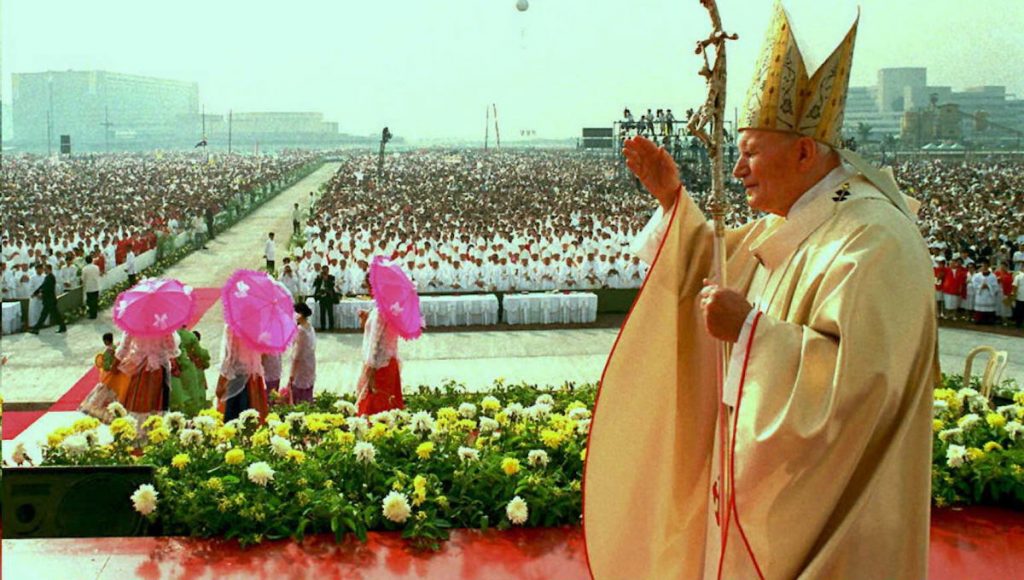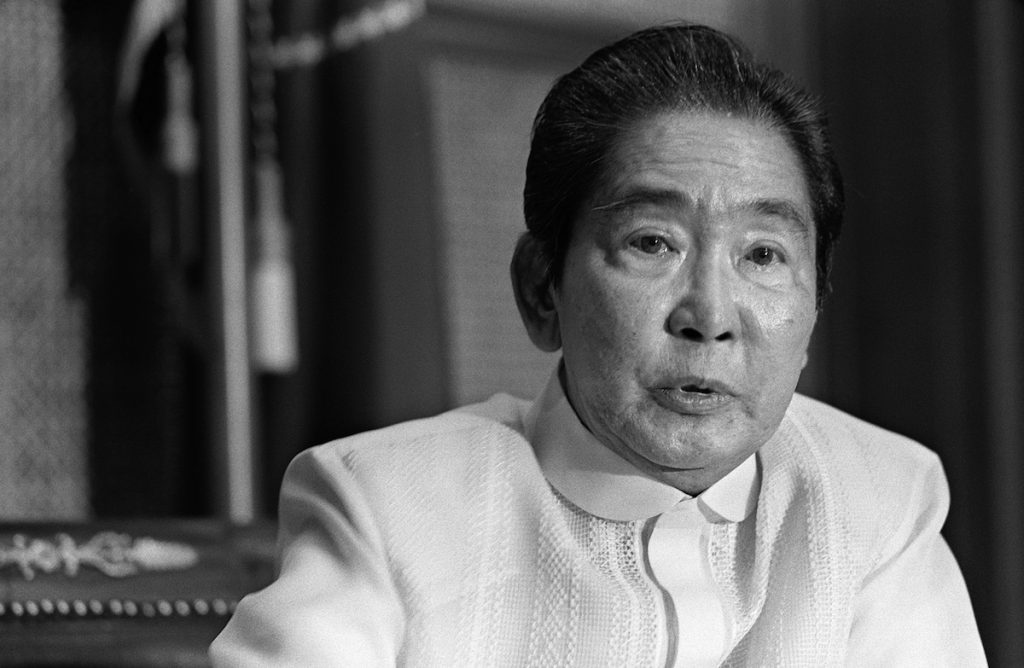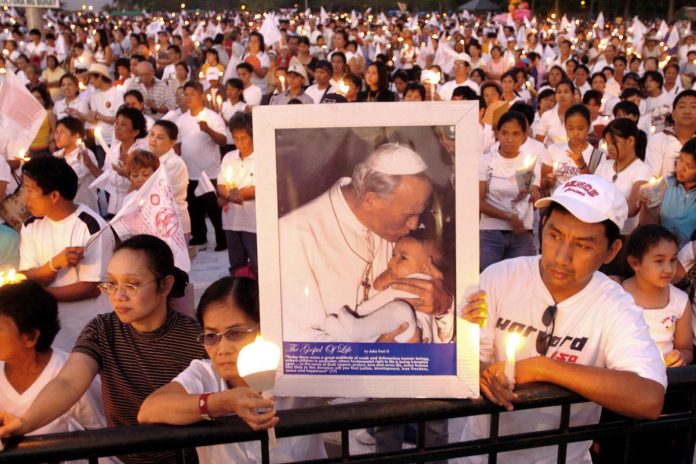Desperately wanting to give Pope St. John Paul II a good impression in his 1981 pastoral visit to the Philippines, the dictator Ferdinand Marcos formally lifted martial law, which had been imposed on the country since 1972.
The operative word being “formally,” as everyone knew that Marcos kept all his powers and the entire country under military boots.
In his Feb. 17, 1981, speech at the presidential palace, the pope thanked Marcos for inviting him and offered blessings for Filipinos.
But in the same speech, Pope St. John Paul II bravely confronted the then-festering human rights situation of a country under a police state.
“Even in exceptional situations that may at times arise, one can never justify any violation of the fundamental dignity of the human person or of the basic rights that safeguard this dignity,” he said.
“Legitimate concern for the security of a nation, as demanded by the common good, could lead to the temptation of subjugating to the state the human being and his or her dignity and rights,” added the pope.
“Any apparent conflict between the exigencies of security and of the citizens’ basic rights must be resolved according to the fundamental principle — upheld always by the Church — that social organization exists only fοr the service of man and for the protection of his dignity, and that it cannot claim to serve the common good when human rights are not safeguarded,” he said.

That 1981 visit challenged and pushed the limits of the democratic pretensions of the Marcos dictatorship, as the pope went to the slums of Tondo district to minister with the poor workers of Manila.
The pope also addressed representatives from the middle class and professionals gathered at the Araneta Coliseum in what, to me, remains one of his most compelling statements on the role of these social classes in social transformation.
To the middle class, the pope said: “You have a twofold calling. In the first place, you have to meet your personal needs and those of your families, through the exercise of your professions. In this you have sometimes experienced difficulties and frustrations and perhaps even discouragement. And yet you must not give up, knowing as you do that you are also called upon to make your contribution to the service of the common good.”
“When things are going well, never shut yourselves off from society for the sake of making money, gaining power or acquiring more knowledge; do not retreat into a position of privilege. May you put your talents to good use by serving ever more generously the needs and aspirations of all your brothers and sisters in the Philippines,” he said.
Pope St. John Paul II said Mass with the sugar workers of Negros Island in the central Philippines, and called on landlords to fulfil their Christian obligation of stewardship and to provide fair wages to their workers.
Long considered the country’s sugar capital, Negros then had been dominated by pro-Marcos sugar barons and secured by the dictator’s military forces. Many sugar workers and farmers have gone to organize themselves, with many joining the underground resistance.
That historic visit also brought him to the youth at the University of Santo Tomas, to Catholic movements in Iloilo, to priests and seminarians in Cebu, to Muslim leaders in Davao, to a group of representatives from a leper colony, and to refugees.
The Vatican’s online archives contain most of his speeches in such a whirlwind visit that took him across the Philippine archipelago to touch the people of the Philippines at a time when they needed blessings the most: as they prepared for what would be the twilight years of the dictatorship.
Pope St. John Paul II capped his 1981 visit with something no pope had ever done before: hold a beatification ceremony outside the Vatican.
At a solemn outdoor Mass at the Rizal Park, the pope recited the formula of beatification for the Christian martyrs of Nagasaki, including the Philippines’ protomartyr Lorenzo Ruiz, a young catechist who joined a mission to Japan.
It was a high honor for the Philippines, and a touching papal gesture to the growing number of Filipino workers working abroad.

It is unknown what attempts the dictator made to hide from the pope the stark realities of living under the dictatorship. Surely, he had his supporters among the bishops who could have exerted influence on the Vatican. But it now appears that they failed, and they failed spectacularly.
The pope’s targeted visits to the restive and struggling sectors and communities may have emboldened them further and reinforced their spirits. The activist bishops, priests, seminarians, and nuns appear to have been vindicated by the pope’s itinerary and his own words.
The next years would bring more suffering under the dictatorship, ranging from the assassination of more oppositonists and activists, to a famine in Negros, to economic degradation brought by corruption and economic policies beneficial only to the dictator’s foreign and domestic business ties. Many members of the Church would preach solidarity with the poor, justice, and integrity of creation.
By 1986, a majority of bishops would find courage to reject the rigged results of “snap” presidential elections called by the dictator.
Exactly five years after Pope St. John Paul II left Manila, the nationwide resistance culminates in the historic People Power* uprising that finally toppled Marcos.
The pope and people of the Philippines would outlast and outlive both the dictatorship and the dictator.
*The “People Power Revolution” was a series of popular demonstrations in the Philippines, mostly in Metro Manila, from Feb. 22–25, 1986. The sustained campaign of civil resistance against regime violence and alleged electoral fraud resulted in the ouster of Ferdinand Marcos 34 years ago today.
Tonyo Cruz is a Filipino blogger, newspaper columnist, and convener of the media and arts alliance Let’s Organize for Democracy and Integrity. The views and opinions expressed in this article are those of the author and do not necessarily reflect the official editorial position of LiCAS.news.









